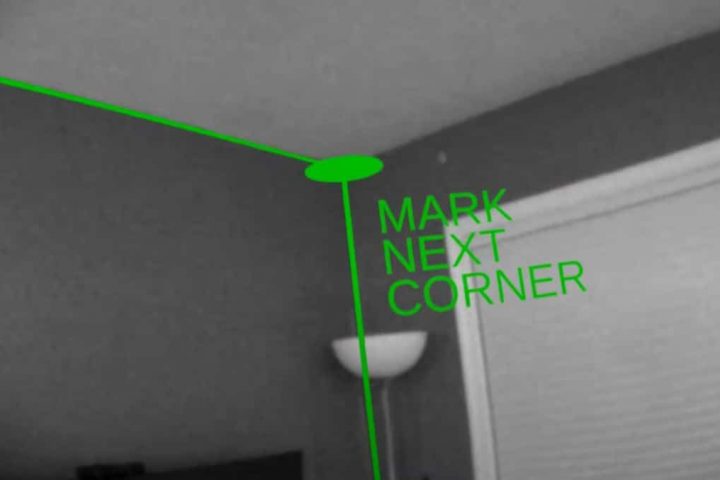
Oculus Santa Cruz is a VR prototype that brings many high-end features of the Oculus Rift and Touch, most notably positional (6DoF) tracking on both headset and controllers, into a self-contained, standalone design. What follows is a brief overview of everything we know about the headset so far.
What is Oculus Santa Cruz?

Originally announced at Oculus Connect 3 in 2016, the Santa Cruz project represents “the future” of Facebook’s long-term vision for VR hardware, positioned between Gear VR and Rift, aiming to deliver a high-end VR experience without the need for external sensors or a PC connection. Santa Cruz has many similarities in design and features to the Oculus Rift, but is a self-contained system, using an internal processor, displays, battery, and sensors for the same kind of positional (AKA 6DOF) tracking found on high-end tethered headset. That means it doesn’t rely on a host device like a connected computer or docked smartphone.
Unlike the soon-to-launch Oculus Go, which is essentially an affordable all-in-one Gear VR, Santa Cruz is targeting a future ‘high-end’ mobile VR market thanks to its 6DOF tracking on both the headset and the controllers, and a more powerful processor.
Want to know what it’s like to use Santa Cruz? Check out our hands-on with the latest prototype for a detailed look.
What Are the Oculus Santa Cruz Specs?

For now, detailed specifications are unconfirmed, as Santa Cruz is still in its prototype phase. However, it is likely to use a high-end mobile chip; specifically we’d bet on Qualcomm’s Snapdragon 845 as the underlying SoC, especially considering that the Oculus Go is built on a lower-end version of that chip. Looking into the capabilities of the Snapdragon 845 then gives us some high level insights into the specifications of Santa Cruz. According to Chris Pruet, Oculus’ Head of Development Engineering, who spoke about Santa Cruz at GDC 2018, the headset’s thermal design allows the processor to run at higher clock rates than any similar device he’s seen.
We went hands-on with a Santa Cruz prototype in October 2017, which already featured what appeared to be higher resolution displays (but probably running below 90Hz) and improved Fresnel lenses when compared to the Rift. At the time we confirmed that the headset is using a pair of displays, and includes an IPD adjustment slider. If we had to guess, we’d expect that Santa Cruz is using the same 1,440 × 1,600 displays that are presently found in the Samsung Odyssey and Vive Pro headsets.
The most recent Santa Cruz images from Oculus show that the latest design remains similar to latest prototype we tried in 2017, in terms of incorporating the mainboard and battery into the display enclosure, with four ultra-wide cameras placed on the leading edges that perform the inside-out positional tracking, as well as tracking the 6DoF controllers.
The device also features integrated speakers hidden in the head strap (similar to the Oculus Go), along with volume buttons on the headset, plus a headphone jack for more private and higher-quality sound. The headstrap looks similar to the Rift at first glance, but has a different shape for cupping the back of the head, and is made from a more flexible, rubbery material.

The controllers are similar to that of the Oculus Touch units, and the Oculus says they’ll feature thumbsticks and buttons instead of trackpads, to bring the inputs closer to Touch parity.
What’s Know About the Oculus Santa Cruz Release Date & Price?
Oculus hasn’t officially announced a release date or price for Santa Cruz, but we can make some educated guesses based on the available information. At Oculus Connect 4 in October 2017, the company stated it was aiming to have developer kits out in the wild within a year. That leads us to believe we’ll see a late 2018 or early 2019 release date for Santa Cruz.
While price is also unconfirmed, Santa Cruz is clearly a very different proposition to the $200 Oculus Go. With Rift-level components and a self-contained design, it seems likely that it will be considerably more expensive than the $400 Oculus Rift and Touch. Competitive products give us a likely idea of pricing as well, with the Lenovo Mirage Solo priced at $400 and the Vive Focus around $525.
We’re expecting to hear more information about the Santa Cruz launch date and price at Facebook’s F8 conference in May and the Oculus Connect conference in the second half of 2018.
The post Everything We Know About Oculus Santa Cruz (so far) appeared first on Road to VR.




